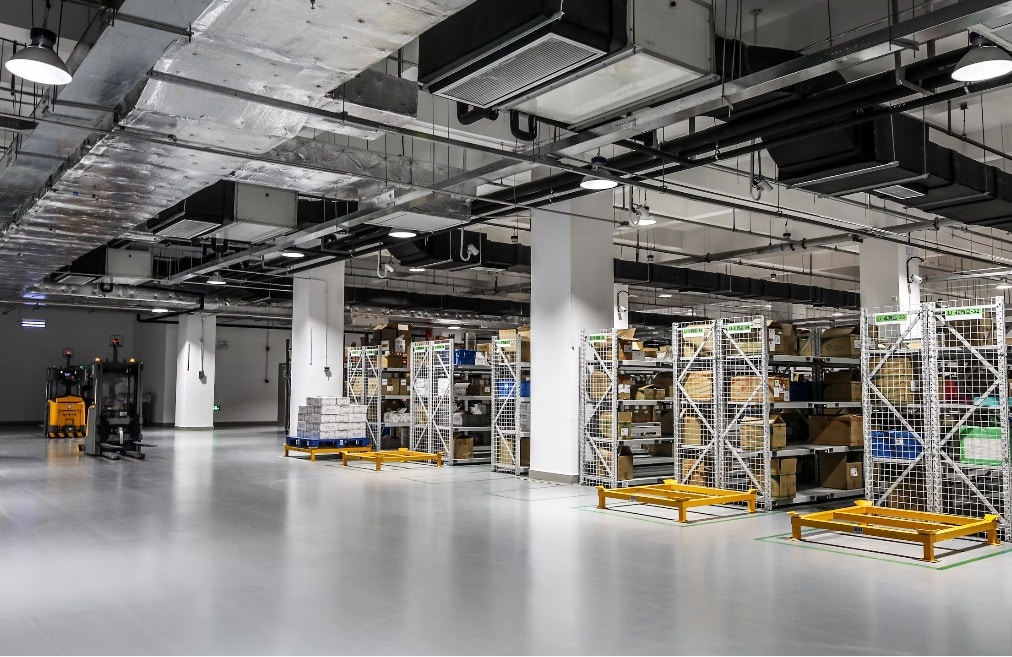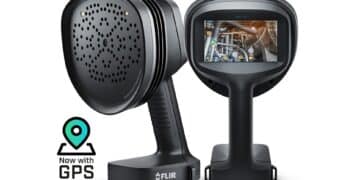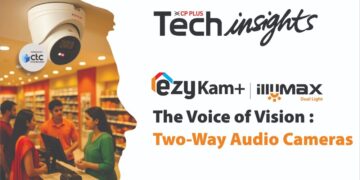As global e-commerce continues its upward trajectory, warehouse development is expanding rapidly across the globe. With facilities expanding in size and value, their vulnerability to theft also increases, Optex says. Warehouses often house high-value inventory, from consumer electronics and pharmaceuticals to automotive parts and construction equipment, making them prime targets for both organised crime and insider theft (often referred to as shrinkage).
The risk is especially acute in regions where warehouses operate 24/7 with limited on-site staff during evening and early morning hours, Optex says. Traditional surveillance methods often leave operational blind spots and struggle to reliably detect movement or tampering, especially around rooftops, back entrances, narrow aisles, and high-value zones.
Today’s best-practice approach combines several complementary detection layers that work together and integrate with existing video or access-control platforms, giving security teams real-time, actionable data.
Entry points and roof protection
External access points like fire exits, loading bays, rooftops, and skylights are common entry points for intruders. For indoor areas and sensitive doorways, curtain-style PIR motion detectors monitor movement near emergency exits and less frequently-used doors.
Mounted horizontally, 2D LiDAR technology creates an invisible laser wall, ideal for securing rooftops and skylights. This is particularly useful in large industrial spaces with open-air access zones that can’t be easily fenced off or covered.
Spotlight: Through the roof theft in a Belgium electronics warehouse
In a striking example of rooftop intrusion, a popular electronics warehouse in Belgium, was targeted by intruders who broke in through a hole cut in the roof, bypassed the alarm system by covering sensors with foil, and abseiled their way into the property. Their in-depth knowledge of the warehouse layout and sensor coverage allowed them to steal over €43,000 worth of high-end electronics. Incidents like this are not isolated and are becoming more commonplace. Traditional PIR sensors often struggle to detect downward movement from above, which is why we recommend REDSCAN laser-based detection systems installed just below the ceiling. This creates a virtual security layer that closes the blind spot below the ceiling and enables focused protection around top shelves, in addition to any existing PIR indoor detection on the ground.
Advanced indoor motion detection
Grade 3 indoor detection sensors are ideal for securing internal areas within warehouses. Designed for high-security environments, Grade-3 compliant sensors are equipped with intelligent IR-Anti-Masking to ensure they cannot be tampered with. For challenging environments, such as where there is air circulation, heating sources, humidity or locations with light fixtures or machines that create vibration or heat shifts, dual-technology detectors (combining microwave and PIR technology) can provide even more accurate human detection with minimal false alarms.
When it comes to specifying the right coverage range, this will depend on the space that requires protection. From narrow-angle coverage for corridors and aisles, to wide-angle coverage, ideal for open spaces or loading bays.
Case study: How FlipX Advanced boosted security of highly valuable plant equipment at a UK warehouse
CCR Property Services, required a high-performance security system to protect an especially valuable plant equipment at their large warehouse and office unit in Rayleigh, England. Local experts Bellmont Security Systems recommended OPTEX’s Grade-3 FlipX Advanced sensors for their accuracy, flexibility, and suitability for high-risk environments.
A series of eight sensors were installed and integrated into the alarm system – with some of the sensors installed in the warehouse to cover narrow corridors and whilst others were configured to protect wide spaces.
“The beauty with the FlipX is that we can have them curtain or we can have them as a wide angled PIR and the ease of installation is also great,” said Paul Thorogood, owner of Bellmont Security. “There’s plenty of space inside the pop-in resistors, which make them great for grade 3 security, as well as the fact that the detection is just fantastic. The system has been in place now for six months and never misses a beat. We are happy and the customer is happy, which is the main thing.”
High-value and restricted zone monitoring
Inside large warehouses, there are often specific areas where valuable goods or restricted stock are stored. These zones require an extra layer of protection.
2D LiDAR sensors, when mounted vertically, provide precise coverage of narrow aisles and racking systems. The sensors can detect even a hand or small object movements, which is especially important for industries such as pharmaceuticals, electronics, or automotive parts. These sensors can be integrated with access control systems to verify whether a person is authorised to enter a sensitive area, triggering alarms if violations occur.
From challenge to solution: REDSCAN Pro LiDAR protecting high-value stock in Polish warehouse
A client in Poland needed to protect high-value stock stored in tall racking systems. The challenge? Detect the removal of small items across 44m long by 9m high racks.
REDSCAN Pro LiDAR sensors were selected and mounted vertically at the top of the racks, creating a laser barrier. The sensors successfully detected hand-sized movements and were calibrated to trigger alarms upon unauthorised access or object removal — something traditional sensors couldn’t manage.
For more Optex news, click here





